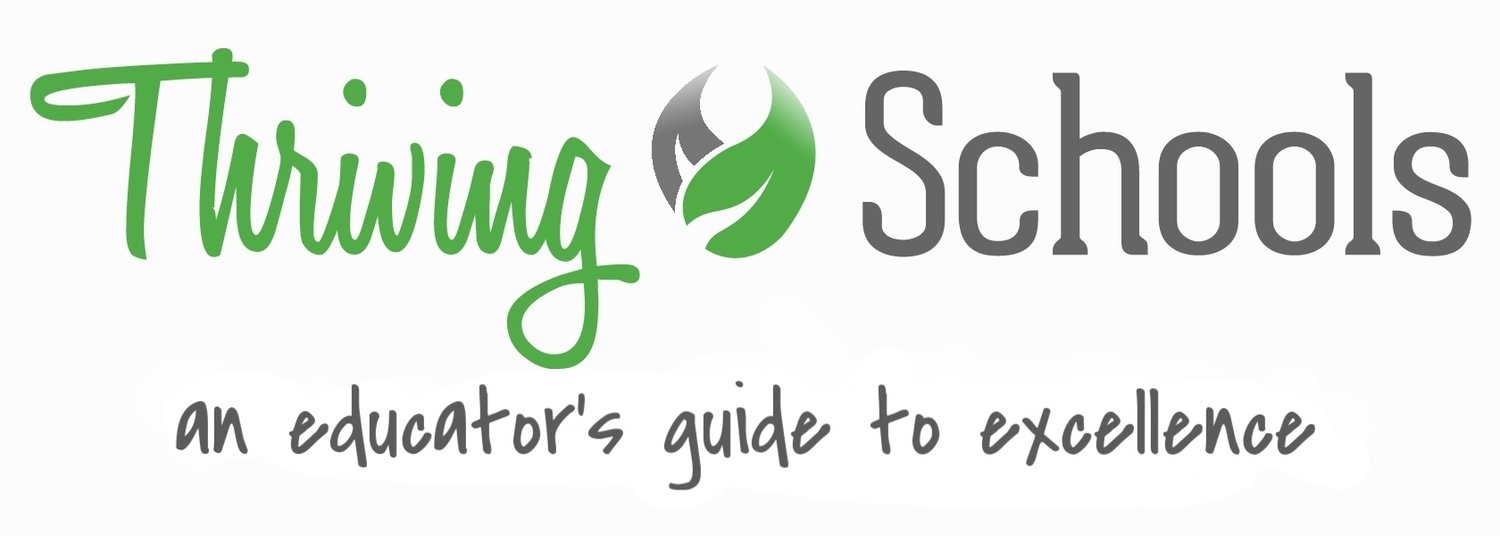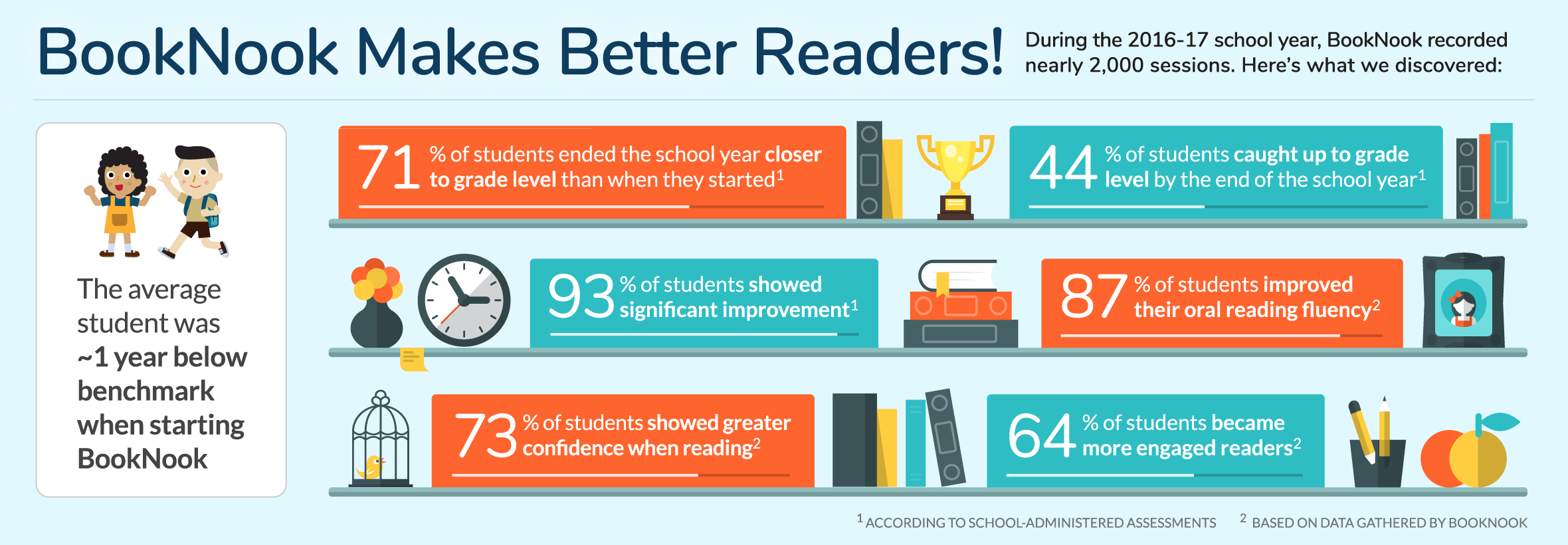7 Ways BookNook Can Revolutionize Reading At Your School
/This piece is based on our conversation with Michael Lombardo, Founder and President of BookNook, a hybrid education technology company that is reinventing one-on-one and small group reading. Previously, Michael spent a decade as the CEO of Reading Partners, a national non-profit organization that pairs volunteers with students who are six months or more behind grade-level in reading. Michael is motivated by the power of technology to help students become better readers and dramatically improve their life outcomes.
Why You Need BookNook
Every great teacher knows the importance of developing a student’s love for reading. However, it often seems there’s not enough time in the day to ensure every student is receiving support at a level that’s right for them. Especially for students who are behind.
At the same time, teachers know there are numerous individuals at their schools (think: paraprofessionals, student-teachers, parents, volunteers, and others) who are in a perfect position to help support these students, but they don’t know the best way to start.
That’s where BookNook comes in.
BookNook offers teachers a platform to facilitate small group reading instruction for the students who need it the most while utilizing individuals in a school community who have the time to help. In the past, teachers would have to run to the library, find sets of books that were levelled correctly for different groups of students, and print off the corresponding materials. With BookNook, that’s now all automated! It might just be the best tool to help support guided reading at your school.
So How Does BookNook Work?
BookNook pairs up to 4 elementary-age students with a reading guide in the same physical space. Using a Chrome or Safari browser on any device, the reading groups work their way through reading passages and corresponding discussion questions that cover a wide variety of reading standards (like main idea, prediction, etc.).
Students are prompted to answer questions about the text while their reading guides record feedback on each student’s reading ability (expression, phrasing, pace, and accuracy). And because the BookNook platform keeps data on student performance over time, it helps teachers and volunteers quickly create the homogenous reading groups that best help students grow. The platform’s technology also suggests the next best text for a given group of readers, focusing on the skill they need the most work on.
BookNook has created a library of materials that are best suited for elementary students. It licenses article-length content from curriculum publishers, turns them into mini-books, and creates materials for a 10-45 minute reading session, depending on the activities a group decides to complete. BookNook also selects its texts to be as relevant as possible to its students’ experiences, including numerous diverse and cultural perspectives.
7 Ways BookNook Can Revolutionize Reading At Your School
1) Tier 2 and Tier 3 Intervention Tool
BookNook was originally started as a tool to help teachers efficiently facilitate Tier 2 and Tier 3 interventions. In fact, this is the most common use of BookNook across the US. A teacher simply pairs up a homogenous group of students with a reading guide (paraprofessionals, student-teachers, special education assistants and teachers, volunteers, and more) and BookNook quickly provides the materials and tools to launch them into a reading session.
2) In-Class Station-Reading
Teachers often use station-style systems to work more intensively with students on different reading levels. BookNook simplifies this process and makes it more efficient by providing the teacher with the texts, questions, and reading standards appropriate for many different groups of students. Teachers also can use this tool during independent reading time to work with small groups of students who need the extra support.
User Example: The Kansas Reading Roadmap uses BookNook as part of a holistic set of before, during, and after-school services. BookNook works with about 50 schools in the state of Kansas under this model.
3) Student-Led Reading Groups
Teachers also frequently break their classes into small groups where students are leading the reading. Using the BookNook platform, a teacher simply designates a student as the group’s “reading guide” (usually a more confident reader) and has that student lead a discussion of the group’s text.
User Example: Lighthouse Lodestar, a charter school in Oakland, used this ‘book club’ model last school year, which prompted BookNook to work on a version of the app that is more specially customized for student-led groups (this version will be released in the fall).
4) Reading Level Evaluation
With BookNook’s leveling feature, a teacher can evaluate the reading level of any student at any time. This also allows a teacher to track a student’s individual progress over the course of a year.
User Example: This feature is included as part of BookNook’s core experience and most schools use it on a regular basis.
5) Before- and After-School and Volunteer Reading Programs
There are tons of examples of after-school reading programs that have been designed and implemented using BookNook. For example, at one of its schools in Detroit, juniors and seniors from a community high school go to the elementary school and use BookNook to provide reading tutoring and support to younger students. Many other successful programs have been designed using school staff, parents, and community volunteers.
User Example: In partnership with Spelman College, student volunteers in Atlanta Public Schools use BookNook as part of a structured after-school service learning program.
6) Home Reading Program for Parents
Some schools have gotten even more creative and decided to equip their parents with BookNook. Parents often struggle to find the right texts to read with their kids and ask the right questions about it. Using BookNook, parents can be more effective leading reading discussions at home with their own children or a small group of children who live nearby.
User Example: Woodland East Elementary in Gurnee, IL (outside of Milwaukee) is a dual immersion school that deploys BookNook with a focus on parents, both in school and at home. They’ve had great success and recently reported that they saw significant midyear benchmarks for 100% of their students using BookNook.
7) Summer School and Non-Profit Reading Programs
BookNook has programming specifically designed for summer school and nonprofits that operate summer day-programming. Using its tools, providers can quickly determine each of its students’ correct level and provide the reading instruction each student needs.
User Example: Boys and Girls Clubs of Greater Houston integrated BookNook into their summer program as the primary academic program last year and saw great results. Rather than experiencing the typical summer slide, students actually gained 1.5 months of reading over summer break.
A Few Final Considerations (and a Special Offer for Thriving Schools readers):
BookNook has tried to be very conscious of how schools and districts purchase curriculum. To that end, it checks nearly all the boxes of a curriculum package that schools require: it provides formative assessment, professional development training, intervention tools, and more!
Right now, BookNook provides its service on a school-wide license level with unlimited usage for teachers and students. However, until the end of the school year, Book Nook is offering Thriving Schools readers a special offer: a free trial account (supporting up to 30 students)! In order to take advantage of this offer, simply fill out the form at this link and the Book Nook team will get in touch with you shortly (be sure to mention Thriving Schools to take advantage of this offer)!




